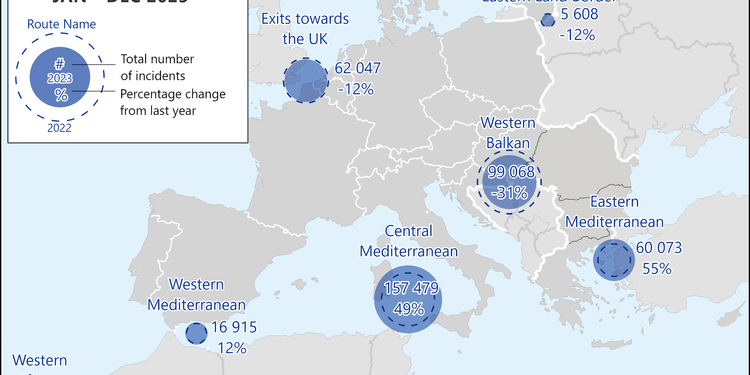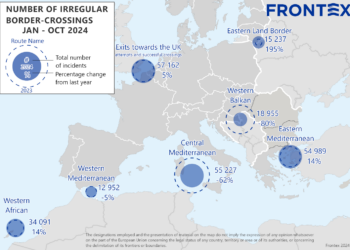Brussels – In 2023 alone, 380,000 migrants crossed the EU’s external borders, the highest figure since the 2016 crisis. According to preliminary calculations by the EU Border and Coast Guard Agency (Frontex), arrivals at the EU’s gates increased by 17 percent from 2022, confirming a steady upward trend over the past three years.
There were 157,479 arrivals from the central Mediterranean, the most active migration route to the EU, with two out of five irregular crossings (41 percent of the total). In second place is the Western Balkans route, at 26 percent of the total but were 31 percent less than the previous year. In third place is the Eastern Mediterranean, or 16 percent of total arrivals. Although limited in numbers to the main routes, the sharpest surge was on the West Africa to the Canary Islands route: a 161 percent increase from 2022.
The most represented nationality is again Syria: in 2023, over 100,000 Syrian nationals crossed irregularly, followed by Guineans and Afghans. These three accounted for more than a third of all detections. Frontex data show that women accounted for 10 percent of all irregular crossings last year, and children accounted for another 10 percent.
Frontex currently has 2,500 EU border guard officers and other personnel in its joint operations at European borders. “The numbers presented today show the evolving challenges we face in managing the EU’s external borders,” said Frontex Executive Director Hans Leijtens. “We remain committed to ensuring the security and integrity of the EU’s borders. It is equally crucial to address the humanitarian aspects of migration. These figures represent not just statistics but real people.”











